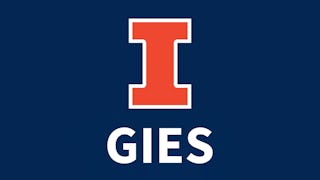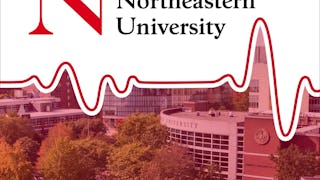Learners will obtain foundational knowledge and insights to begin to identify potential targets for innovation in healthcare. This course provides an overview of the healthcare ecosystem, which is comprised of diverse stakeholders, including hospitals and non-hospital entities within various healthcare value chains. The course will also introduce the healthcare innovation process and value creation. Emphasis is placed on key concepts and principles essential for efficiently designing and managing healthcare delivery systems.
通过 Coursera Plus 解锁访问 10,000 多门课程。开始 7 天免费试用。


您将学到什么
Identify diverse stakeholders in the healthcare ecosystem.
Analyze healthcare value chains, through roles and interrelationships of various stakeholders and their contributions and impacts within the system.
Define innovation processes as they apply to healthcare systems.
您将获得的技能
要了解的详细信息

添加到您的领英档案
27 项作业
了解顶级公司的员工如何掌握热门技能

积累特定领域的专业知识
- 向行业专家学习新概念
- 获得对主题或工具的基础理解
- 通过实践项目培养工作相关技能
- 获得可共享的职业证书

该课程共有4个模块
This module introduces the healthcare ecosystem, focusing on its structure and the dynamics among the various constituents. The module begins with an overview of the healthcare system, highlighting significant issues, gaps, and emerging trends. It underscores the roles of various stakeholders, including physicians, nursing staff, hospitals, and the extensive supply chain, including pharmaceutical firms, biotech companies, medical device manufacturers, IT companies, regulators, and patients. The module addresses the relationship between healthcare spending and GDP growth, highlighting sustainability concerns and the difficulty in achieving multiple goals regarding cost, quality, and access. It discusses the demographic and policy challenges of the uninsured population in the U.S. It briefly reviews the changing healthcare ecosystem and invites learners to explore what is happening in other industries. By laying this foundational knowledge, the module prepares learners for a deeper exploration of the healthcare ecosystem's intricate and evolving landscape in subsequent modules.
涵盖的内容
11个视频7篇阅读材料8个作业1个讨论话题1个插件
This module examines the complexities and opportunities within healthcare systems, focusing on how variations and integration play crucial roles. The module begins by examining the market for healthcare from a hospital's perspective, highlighting how variations in demand and supply drive the unique nature of hospital management. The Dartmouth Atlas is referenced to understand micro-area variations, shedding light on how different regions exhibit diverse healthcare dynamics. The module then delves into recent trends in costs and revenues and the interactions between providers, producers, and payers. These interactions create various forms of integration, influenced by regulatory changes and policy shifts. The discussion extends to matching organizational forms with their intended functions, presenting three prototypical approaches—asset-oriented, disease-oriented, and super-focused. Each approach is analyzed for its applicability and effectiveness in different healthcare contexts. We also explore how these forms dictate the type of innovation and the rate and direction of change. The module discusses opportunities to innovate by going beyond the producer-provider-payer system boundaries. Overall, the module underscores the importance of adapting to variations, embracing integration, and fostering innovation to improve healthcare systems. Learners are encouraged to think critically about these concepts and consider how they can be applied to address contemporary challenges in healthcare.
涵盖的内容
9个视频2篇阅读材料6个作业
In this module, we will focus on the interdependent relationship between innovation and processes. Innovations change how tasks are performed, while processes guide these changes to ensure they are beneficial, measurable, and actionable. The module uses examples, including emergency rooms and telekiosks in remote areas, to illustrate these dynamics. We will also discuss key process metrics: flow rate and flow time. Understanding these metrics helps to improve patient flow and system efficiency and, thus, are ripe targets for innovation. We will emphasize integrating innovations into workflows, reducing unnecessary actions, reducing variability, and enhancing the quality and accessibility of healthcare services.
涵盖的内容
9个视频2篇阅读材料5个作业
In this module, we will examine the supply chain, its organization, the players, the processes, and the key challenges, as well as opportunities to innovate. Many ideas are brought in from supply chain management in other industries, including the role of retailers, distributors, and wholesalers in matching demand and supply. The challenges discussed include coping with the huge variability in volume and variety in the healthcare system. The manufacturer's key problem is planning capacity when the approval process is uncertain and volumes are hard to predict. We study how the R&D cycle adds several more years to the length of the supply chain. We will discuss the important role of information technology (IT) and how it connects participants using platforms, enables other forms of communication, and propels change for healthcare systems by implementing a digital transformation strategy. In summary, the module presents the essential tension between maintaining momentum through innovation and containing cost and the mediating role of IT.
涵盖的内容
10个视频4篇阅读材料8个作业1个插件
获得职业证书
将此证书添加到您的 LinkedIn 个人资料、简历或履历中。在社交媒体和绩效考核中分享。
攻读学位
课程 是 University of Illinois Urbana-Champaign提供的以下学位课程的一部分。如果您被录取并注册,您已完成的课程可计入您的学位学习,您的学习进度也可随之转移。
位教师

从 Leadership and Management 浏览更多内容
 状态:免费试用
状态:免费试用University of Illinois Urbana-Champaign
 状态:免费试用
状态:免费试用University of Minnesota
 状态:免费试用
状态:免费试用University of Illinois Urbana-Champaign
 状态:预览
状态:预览Northeastern University
人们为什么选择 Coursera 来帮助自己实现职业发展




常见问题
To access the course materials, assignments and to earn a Certificate, you will need to purchase the Certificate experience when you enroll in a course. You can try a Free Trial instead, or apply for Financial Aid. The course may offer 'Full Course, No Certificate' instead. This option lets you see all course materials, submit required assessments, and get a final grade. This also means that you will not be able to purchase a Certificate experience.
When you enroll in the course, you get access to all of the courses in the Specialization, and you earn a certificate when you complete the work. Your electronic Certificate will be added to your Accomplishments page - from there, you can print your Certificate or add it to your LinkedIn profile.
Yes. In select learning programs, you can apply for financial aid or a scholarship if you can’t afford the enrollment fee. If fin aid or scholarship is available for your learning program selection, you’ll find a link to apply on the description page.
更多问题
提供助学金,



